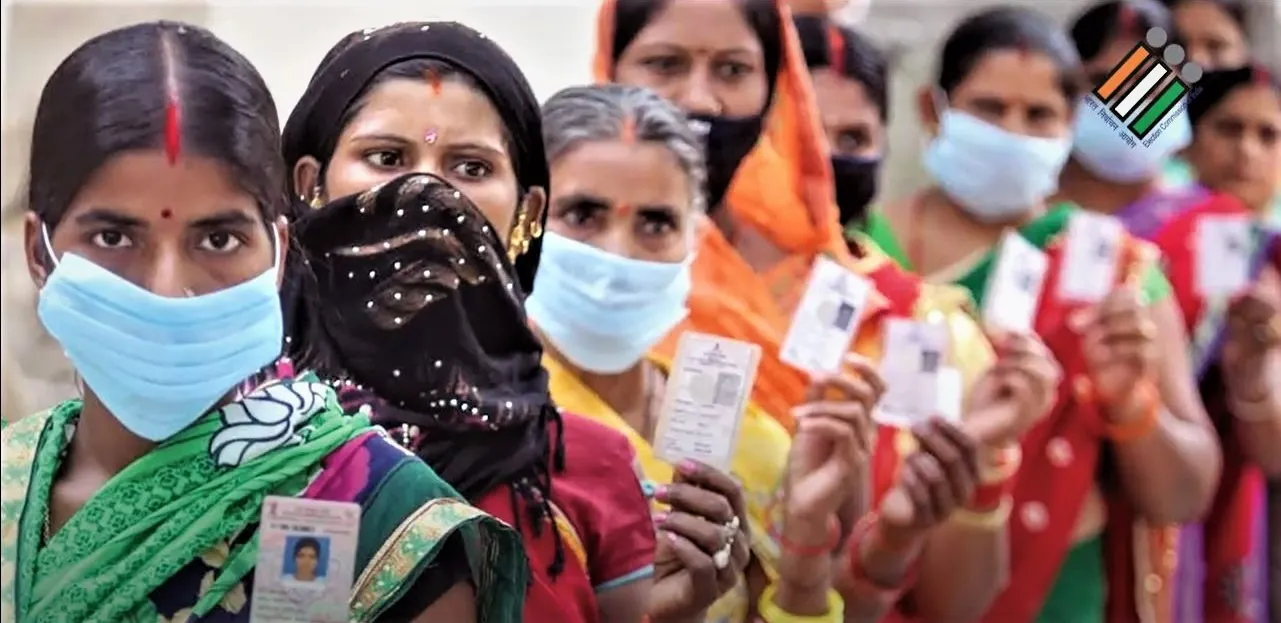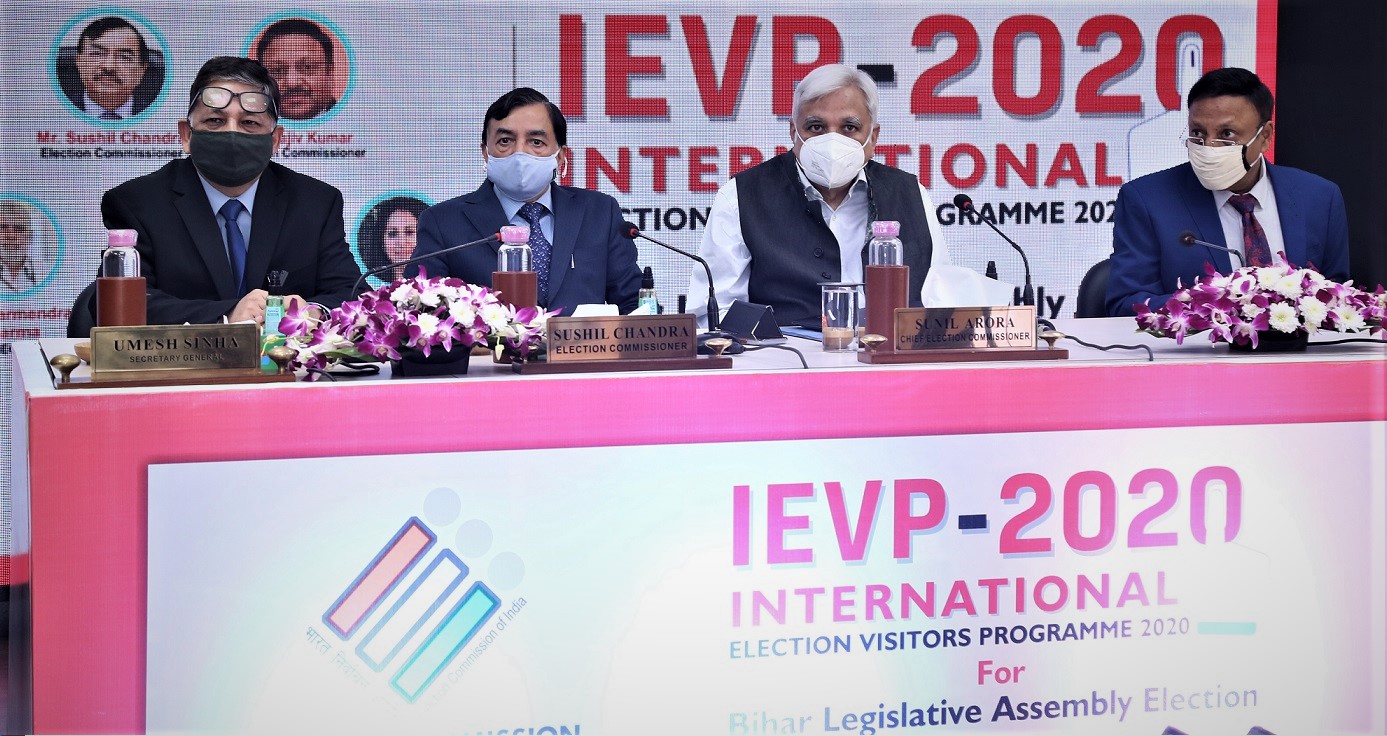Assam, West Bengal, Kerala, Tamil Nadu, Puducherry: Indian State Assembly Elections keep the Flame of Democracy Burning

Since the start of the Covid-19 pandemic, the Election Commission of India (ECI) has organized several major elections: those for the Bihar’s Legislative Assembly in November 2020 and indirect elections of the Rajya Sabha (Upper House) held in March and June 2020. On 6 April 2021, State Assembly elections were organized in four Indian states and one union territory, calling alltogether 185 million eligible voters to decide the faith of 824 Assembly seats, making these elections one of the largest organized during the pandemic.
Disclaimer: Views expressed in this commentary are those of the author. This commentary is independent of specific national or political interests. Views expressed do not necessarily represent the institutional position of International IDEA, its Board of Advisers or its Council of Member States.
These State Assembly elections took place just prior to a grim milestone, India reported its highest-ever jump in Covid-19 cases, with 103,558 recorded on 4 April. The total cases in India at present stand at 12.59 million with 166,860 deaths. In its public communication efforts in the lead up to these elections, the ECI, emphasised the people’s right to exercise their democratic rights even amidst the pandemic.
According to recently published Democracy Indicators, India has marked a significant decline in its democracy over the recent years. In the Freedom House report of 2021, India’s status declined from Free to Partly Free, and the Variety of Democracies (2021) categorises India as an ‘electoraly autocracy’. International IDEA's Global State of Democracy (GSoD) Indices detected democratic backsliding in India in number of major attributes including Representative government, Fundamental Rights and Checks in Government. As per the GSoD Indices, also India’s ‘clean elections’ score has dropped from the score of 0.78 in 2008 to 0.64 in 2019. In contrast, ‘electoral participation’ has increased from 0.56 in 2013 to 0.69 in 2019, which is above the regional average.
The Covid -19 electoral safeguards
At the best of times, elections in India are one of the world's largest and most complex logistical exercises. The pandemic added to this complexity in the form of extra safety protocols, procurements, managing biometric waste, revised voter education materials, etc. As first line workers, all polling station staff were vaccinated, and absentee/postal voting methods were extended to new groups, including the elderly (over 80 years), differently abled , those infected by the virus, and those in quarantine.
Elections after elections, the Indian election officials have been studying the voter behaviour in a detailed manner, making sure that polling stations are within reasonable distance for voters, even in cases requiring setting up a polling booth for one voter only. This approach, however, still assumes that eligible voters are physically present in their constituencies on election day. In an increasingly mobile world, and in a country marked by overseas migration and as massive internal migrant labor movements, refining modalities of absentee voting and registration could be a measure to further increase voter turnout.
Mr Sunil Arora, the Chief Election Commissioner of the ECI called for 'faster exchanges of best practices by the EMBs from around the world'. The ECI emphasised that it is no longer enough for elections to be free and fair; they must also be accessible, inclusive, transparent and safe.

Voter turnout
Over the last decade, the ECI has exerted considerable efforts to increase voter turnout and facilate electoral participation. These efforts have has borne fruit. In the 2009 General Elections voter turnout recorded 58,2 per cent, whereas in 2019 rose to 67.4 per cent. In the recent Legislative Assembly elections in Bihar, despite being held under Covid-19 restrictions, voter turnout increased from 56.66 per cent recorded in the same elections in 2015, to 57.05 per cent, with female voter particiaption of 59.69 per cent.
ECI’s Systematic Voter Education for Electoral Participation (SVEEP) programme has been targeting youth and the first time voters, women and differently abled in particular, and has yelded positive results. However, and as several studies show, the energising effects of the incumbent Bharatiya Janata Party (BJP) and of the current Prime Minister Narendra Modi, particularly amongst the middle class voters, cannot be underestimated either.
Political map of the five States
In terms of political outlook, the five State Assemblies differ from India’s Federal Parliament which is dominated by the BJP. Indian federal system is characterised by strong regional and state-level political parties. They are often ruling the state governments and possess much bargaining power when forming coalitions with the major national political parties at the federal level.
In the State of Kerala, leaders of the Indian National Congress and of the Communist Party of India (Marxist) have been alternating each other in power. As per election polls, the Communist Party and Left Democratic Front are in the lead. The State of West Bengal has been governed by the All India Trinamool (AIT), a regional political party active in the State. The party is led by its founder and current Chief Minister Mamata Banerjee, the first woman to hold the office. The AIT came to power in 2016, after 29 years of continued rule by the Communist Party of India (Marxist). This time, polls are predicting tight competition between the AIT and the BJP.
The State of Tamil Nadu is administrated by the All India Anna Dravida Munnetra Kazhagam (transl. All India Anna Dravidian Progressive Federation, AIADMK)—a regional party active in few states and currently part of coalition at the federal level, led by the BJP. Overall, it is expected that the AIADMK will remain in power. In the State of Assam, in the North East of India, the incumbent Chief Minister, when he was sworn-in on 24 May 2016, became the first member from the BJP to assume such role; he is contesting the next election too.
Puducherry is one of the three Union Territories of India (the others being the National Capital Territory of Delhi and, Jammu and Kashmir), entitled by a special constitutional amendment to have an elected Legislative Assembly and a Cabinet of Ministers, thereby conveying partial statehood. The Territory has been ruled by the Indian National Congress Party for the last twenty years, until the Chief Minister lost majority in the Legislative Assembly in the elections held on 22 February 2021.
India uses electronic voting machines (EVMs) and the results are scheduled to be announced on 2 May, after the last phase of the West Bengal elections is concuded on 29 April.
India’s democracy is suffering from many ills but at the state level, the Indian elections are fiercely competitive and electorate keen to cast their vote, even amidst the pandemic. This is very good news.
The author attended the International Election Visitor Programme organized by the Indian Election Commission on 5-6 April 2021. This programme was attended by 110 delegates, including EMBs from 26 countries, three international organizations (International IDEA, IFES and the AWEB) and representatives of diplomatic community accredited to India.




